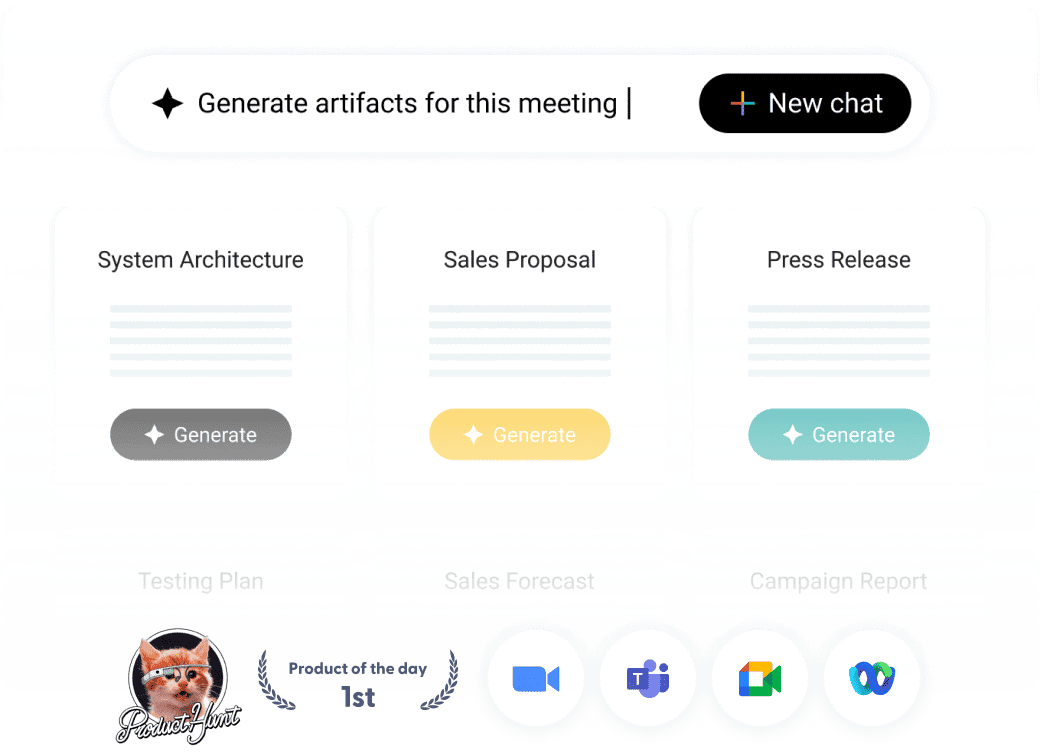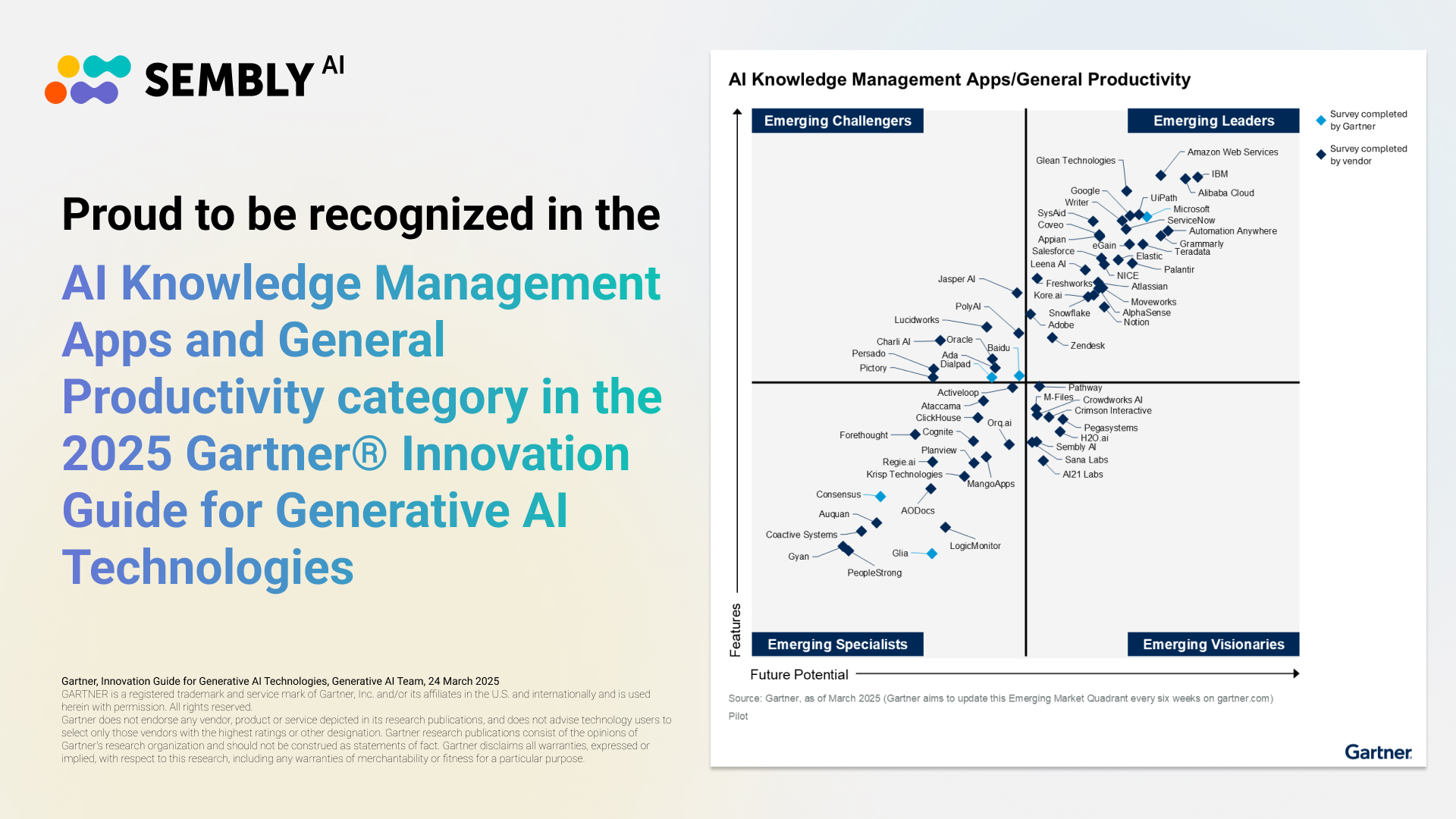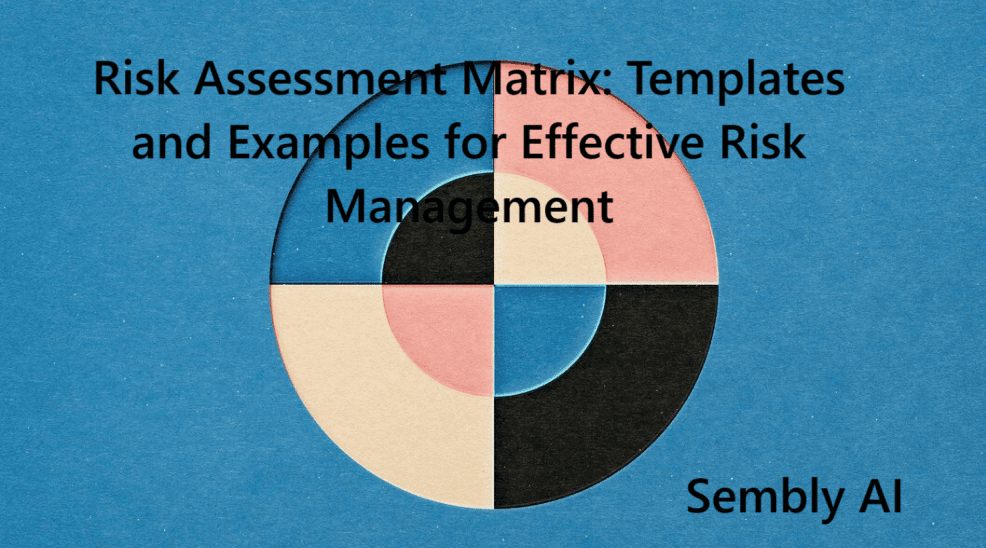Table of Contents
ToggleEvery business wants to automate marketing as much as possible in 2025, but most end up with a maze of disconnected tools and stale campaigns. Their marketing automation strategy becomes a trap of complexity rather than the promised solution for sustainable growth and efficiency.
A select group of companies is taking a different approach. By streamlining marketing processes and harnessing AI capabilities, they’re transforming how automation serves their business goals. These organizations don’t just deploy random tools—they build marketing automation strategies that eliminate redundant tasks and optimize resource allocation. The results speak through metrics: faster campaign execution, reduced manual workload, and eventually improved overall team productivity. This shift from chaotic automation to strategic efficiency marks a new era in marketing operations, where technology serves as a catalyst for scalable growth rather than a burden of maintenance. And today, we’re going to dissect the most successful marketing automation strategies and outline a step-by-step path to implement these best practices right into your business. Let’s dive in!
What Is a Marketing Automation Strategy?
First, let’s define marketing automation itself. Usually, marketing automation is a set of digital tools that handles routine marketing tasks through smart, data-driven systems. The rise of AI marketing automation, in turn, has transformed these tools from simple schedulers into intelligent platforms that learn and adapt, pushing the limits of what can be automated.
If we keep things that simple, we can define a marketing automation strategy as a systematic blueprint for implementing and managing automated marketing processes. It maps out how a business will use automation tools to reach its goals, optimize resources, measure performance metrics, and create scalable marketing operations.
Key Differences Between Strategy and Marketing Campaigns
Although marketing automation strategy and marketing campaign might sound similar, they represent completely different levels of planning. A marketing strategy is your master plan that defines long-term goals and approaches, while campaigns are tactical elements that execute parts of this strategy.
Think of strategy as the blueprint for an entire building, whereas campaigns are the individual rooms built according to that blueprint.
Why Does Your Business Need an Automation Strategy?
Like digital transformation in past years, marketing automation strategies have become a key differentiator in today’s market. While most businesses struggle with disconnected tools and complex workflows, companies that build strategic approaches to automation gain a significant edge.
A well-planned automation strategy prevents costly tool redundancies and ensures every marketing investment serves clear business goals. Such a strategy turns automation from a source of complexity into a systematic framework that scales marketing efforts and drives predictable growth through data-driven decisions.
Key Benefits of Marketing Automation
We’ve explored the in-depth benefits of marketing automation in one of our previous articles. Here’s a focused overview of key benefits that help us understand how automation transforms marketing operations:
- Improved efficiency through streamlined workflows and automated email sequences that guide prospects through their customer journey;
- Enhanced customer experience with personalized messaging across all channels backed by data showing that 80% of customers value personalization;
- Better lead management using score-based systems to identify and nurture high-potential prospects;
- Deeper data insights that reveal customer behavior patterns and campaign performance in real time;
- Cost reduction through automated processes that let teams focus on strategic tasks;
- Scalable campaigns that maintain quality while growing reach;
- Multichannel integration that creates consistent messaging across all platforms;
- Higher customer retention through timely, targeted engagement;
- Increased revenue from more efficient lead conversion and personalized customer journeys.
Types of Marketing Automation

The modern market offers numerous marketing automation tools, each serving different business needs and complexity levels. Here’s a classification—or rather, a practical breakdown of key automation types that help you structure your automated marketing strategy and choose relevant tools for your future automation tasks.
There are three logical ways to divide marketing automation:
Types of Marketing Automation by Function:
- Email automation: Handles scheduled campaigns and triggered responses based on user behavior. It creates personalized sequences that guide prospects through their journey. Message timing and content adjust automatically to engagement patterns.
- Lead management: Tracks and scores prospects from the first touch to conversion.
- Social media automation: Schedules posts across platforms at optimal times. Analytics track engagement in real time.
- Analytics: Provides live performance tracking on all levels of your marketing activities.
- Campaign management: Coordinates multi-channel marketing efforts, including email marketing, SMM, and web efforts. Marketing automation tools for campaign management ensure a consistent brand voice at every touchpoint.
- Content personalization: Delivers tailored messages and relevant content based on user profiles.
Types of Marketing Automation by Business Goal:
- Lead generation: Captures prospects through automated forms and scoring. It qualifies leads before sending them to sales. These systems filter out low-quality leads while prioritizing promising ones.
- Customer retention: Builds systematic loyalty programs.
- Sales enablement: Provides prospect data and automates follow-up emails. Sales and marketing teams get alerts when leads show buying signals.
- Brand awareness: Maintains presence.
- Customer service: Handles basic inquiries 24/7. It routes complex issues to human agents;
- Revenue optimization: Focuses on high-value opportunities. It predicts which leads are most likely to convert.
Types of Marketing Automation by Complexity Level:
- Basic automation: Runs welcome emails and birthday messages, for instance. It handles simple repeatable tasks that need minimal human intervention.
- Mid-level automation: Creates workflows that span multiple aspects of your marketing efforts and channels;
- Advanced automation: Uses AI to predict behavior and adapt campaigns. Machine learning improves targeting accuracy over time.
Steps to Develop a Successful Marketing Automation Strategy
The path to selecting marketing automation strategies for sustaining success depends on your starting point and goals. Based on the three complexity levels we discussed—basic, mid-level, and advanced—we’ve developed matching implementation guides. Each approach builds on the previous level, letting you start with simple automation and scale up as your team gains experience.
Scenario 1: Strategy for Basic Automation
Now, let’s begin with basic marketing automation. We are talking about the level at which businesses take their first steps into streamlined marketing with marketing automation solutions. While advanced systems may seem tempting, starting with fundamental automation creates a strong foundation for future growth. This guide focuses on essential steps that bring quick wins and build team confidence in automation.
Step 1: Audit Your Current Marketing Tasks
Look at your daily marketing activities and identify repetitive tasks that consume most time. Email responses, social media posting, and basic lead capture are the best choices for novices. Also, don’t forget to track how much time your team spends on these tasks to measure potential automation impact.
Step 2: Choose One Channel to Start
Pick your most active marketing channel. Email marketing is typically the easiest option to begin with. Starting with a single channel lets your team learn automation basics without feeling overwhelmed.
Step 3: Set Up Basic Lead Capture
Create simple forms on your website to collect visitor information. Build an automated welcome email sequence that triggers when someone fills out these forms. This basic workflow introduces your team to trigger-based automation while generating immediate value.
Keep the forms short and focused on essential information. Test different form placements and triggers to find what works best for your audience. Remember that the quality of leads matters more than quantity—start with basic qualification questions that help identify genuine prospects.
Step 4: Build Email Templates and Basic Flows
Design templates for common customer interactions like welcome messages, thank you notes, and basic nurture sequences. Create simple if-then workflows—when a customer takes action A, send email B. Avoid complex conditions at this stage.
Track which templates perform best and gather feedback from your sales team. Use these insights to refine your messages and timing. Focus on creating a library of versatile templates that can be easily modified for different purposes.
Step 5: Implement Performance Tracking

Set up basic analytics to measure your automation results. Track open rates, click-through rates, form submissions, and other useful email marketing metrics.
Step 6: Train Your Team and Document Processes
Create clear guidelines for managing your new automated systems. Document each workflow and template location. Run training sessions to show your team how to monitor and adjust automated processes.
Scenario 2: Strategy for Mid-Level Automation
When you’ve mastered basic automation and see consistent results, it’s time to scale up your marketing automation plan. Mid-level automation involves connecting multiple channels and creating sophisticated automation workflows, eventually turning separate tools into an integrated system that drives qualified leads and revenue growth.
Step 1: Map Cross-Channel Customer Journeys
Analyze how prospects move through your sales funnel before converting, covering all aspects of the customer lifecycle. Document each touchpoint and interaction to identify opportunities for automation workflows.
Step 2: Connect Your Marketing Stack
Integrate your key marketing platforms to share data and trigger actions across systems. Focus on connecting your CRM, email platform, and analytical tools to improve marketing efficiency and track conversions. This stage is important, as it will be used for most automation tools in the future.
Step 3: Choose Priority Functions to Automate
Previously, we discussed how automation types can be categorized by function. At this stage, you should select which key marketing functions you want to automate based on your team’s capabilities and business priorities. Choose functions that show clear potential for efficiency gains and ROI, and try to implement automation into them.
Study your current marketing functions and prioritize them using these criteria:
- Time spent on manual tasks;
- Impact on lead quality;
- Revenue potential;
- Resource requirements;
- Integration complexity.
The table below outlines core functions to consider and how automation can enhance them (remember that you shouldn’t implement everything at once, just choose the most relevant options):
| Marketing Function | How It Works at Mid-Level Automation |
| Lead Capture & Scoring | Forms automatically adapt based on visitor behavior—ask different questions to different segments. System scores leads using both demographic data and engagement signals like email opens and page visits. |
| Email Marketing | Creates branching sequences that change based on recipient actions. If someone opens but doesn’t click, they get one follow-up. If they click but don’t convert, they get another. Each part adjusts messaging automatically. |
| Campaign Management | Links your email, social, and web campaigns into coordinated workflows. When someone downloads a whitepaper, it triggers related social ads and tailored email sequences without manual work. |
| Website Personalization | Shows different content to visitors based on their industry, source, or previous interactions. A manufacturing prospect sees different case studies than a retail prospect. |
| Customer Segmentation | Automatically groups contacts based on their behavior and profile data. Creates dynamic lists that update as people’s engagement changes. |
| Social Media | Schedules content across platforms while monitoring engagement. When posts receive high engagement, the system automatically promotes them and alerts the team. |
| Analytics & Reporting | Creates scheduled reports showing campaign performance, lead flow, and revenue impact. Flags significant changes and trends that need attention. |
| Meeting Scheduling & Follow-ups | When leads reach a scoring threshold, automatically send calendar links and reminders. Syncs with sales team calendars to avoid conflicts. During the meeting, it automatically creates meeting notes and distributes action items to relevant team members. |
| Content Distribution | Sends targeted content to prospects based on their interests and stage. Tracks engagement to refine recommendations and identify sales-ready leads. |
Step 4: Build Multi-Step Workflows
Create automation workflows that respond to customer behavior across channels. Start with your most common customer paths and build automated responses for each step. These workflows should include multiple touchpoints and decision points. For example, if a prospect downloads a whitepaper—trigger an email sequence, track their website behavior, and adjust the content based on their position in the sales funnel.
Step 5: Set Up Lead Scoring
In most cases, automating a lead scoring system is relevant at this stage. For this, develop a point system that tracks qualified leads across channels. Assign values to different actions like email opens, content downloads, and website visits. Use this data to measure conversion rates and marketing efficiency at each funnel stage.
Step 6: Implement Testing and Optimization Protocols
Create A/B tests for your automated workflows. Track key metrics like conversion rates and revenue growth for each variant and use the data to refine your approach. Set up regular review cycles to analyze results and adjust your automation rules based on performance data. Remember that optimization is an ongoing process—schedule monthly reviews to evaluate how your automation impacts the sales funnel.
Scenario 3: Advanced Marketing Automation
Advanced marketing automation leverages artificial intelligence and machine learning with predictive analytics to create self-adjusting marketing systems. This level of automation requires established data infrastructure and teams skilled in both marketing and data science. It is suited for B2B marketing automation for companies that seek to deliver highly personalized experiences at scale.
Step 1: Set Up a Predictive Analytics Framework
Connect your marketing solutions to AI-powered analytics engines. Train systems to spot patterns in customer behavior and predict future actions.
Step 2: Build Smart Lead Qualification
Deploy AI-based sales automation tools that score leads using predictive models. Create dynamic qualification rules that adapt based on potential customers’ behavior patterns.
Step 3: Implement AI-Driven Personalization
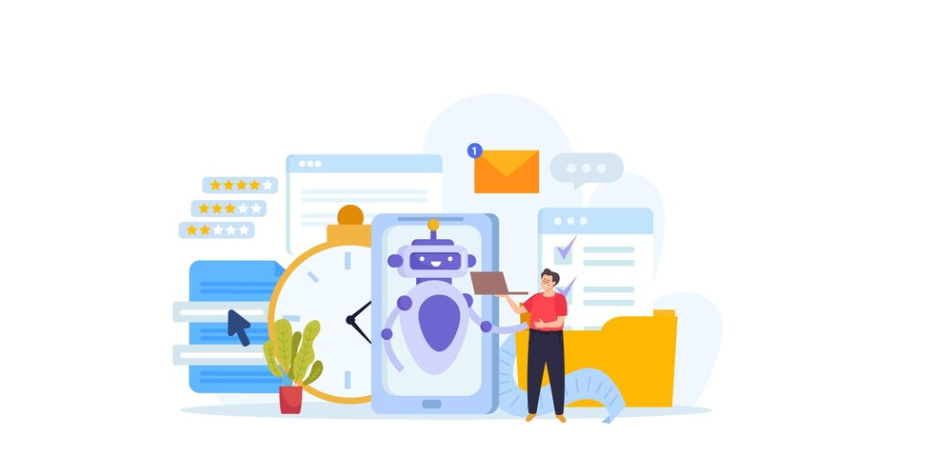
Design content engines that learn from each customer interaction. Create dynamic rules that adapt messaging in real-time. Develop personalized customer journeys that evolve with engagement data and predicted needs.
Step 4: Create Intelligent Customer Journey Orchestration
Transform your marketing automation into a self-optimizing system that adapts to each account’s unique buying process. The system should track engagement across all channels, predict the next best actions, and automatically adjust campaigns based on performance data. Marketing teams need to shift from creating fixed workflows to designing flexible frameworks that let AI make informed decisions. This level of orchestration requires deep integration between sales and marketing departments combined with customer success data to create a unified view of each account.
Examples of such an orchestration
- AI determines optimal email send times based on past engagement patterns.
- Predictive models adjust ad targeting based on account-level buying signals.
- Dynamic website content shifts based on visitor’s industry and behavior.
- Smart content recommendations adapt to each user’s interests and stage.
- Automated nurture flows continuously refine themselves using performance data.
Step 5: Deploy Advanced Attribution Models
Build multi-touch attribution systems that measure true campaign impact. Use artificial intelligence to allocate budgets across channels according to predicted ROI and account engagement patterns.
Step 6: Enable Predictive Optimization
Use machine learning to forecast campaign outcomes and spot potential issues. Create automated systems that adjust tactics based on predicted performance and market changes. Build feedback loops that continuously improve your marketing solutions.
However, it should be said that these automation steps just scratch the surface of what’s possible with modern AI technology. Each advancement in machine learning and predictive analytics unlocks new potential for marketing systems that adapt and evolve on their own. So, here, you can definitely find room for your creativity!
Common Mistakes in Implementing a Marketing Automation Strategy
As we said at the very beginning of today’s article, many businesses stumble when implementing automation. Numerous pitfalls can derail even well-planned marketing automation strategies, leading to wasted resources and missed opportunities. Here, we describe some of the most common mistakes to watch out for when automating your marketing activities:
Data Fragmentation
Data fragmentation poses a significant challenge for marketing teams. When customer information lives in several separate systems, it creates blind spots in personalized content delivery and campaign tracking. Effective marketing software relies on clear, unified data to function properly. That’s why companies that rush to automate without fixing their data architecture often end up with inconsistent messaging and poor customer satisfaction.
Over-Automation
Over-automation is a trap that catches many organizations in their drive for efficiency. While automation of repetitive tasks makes sense, some companies try to automate everything, including processes that need a human touch. Remember: using automation and AI doesn’t mean you don’t need a human touch in marketing. Over-automation leads to rigid workflows and tone-deaf customer interactions. Smart automation strategies always balance technology with human insight, especially in areas like creative content development and complex customer support issues.
The Danger of Static Automation
The “set it and forget it” mindset undermines many automation initiatives. Marketing automation requires regular monitoring and updates to stay aligned with market trends and customer behavior. Teams often neglect to revise and adjust their automated workflows, resulting in outdated campaigns and declining engagement rates.
Change Management Challenges
Poor change management creates resistance and reduces the adoption of new tools. Companies invest in sophisticated marketing automation tools but fail to train their teams properly. Without clear guidelines and proper onboarding, employees may revert to manual processes or use automation incorrectly. Achieving success requires dedicated training, creating detailed documentation, and fostering a culture that embraces technological change without losing sight of core marketing objectives.
Start Building Your Winning Marketing Automation Strategy
Looking for a good tool to start your marketing automation journey?
We have a solution for you! Semblian 2.0 stands out in today’s crowded field of marketing automation tools by focusing on core marketing tasks that teams face daily. Unlike all-in-one marketing automation solutions, Semblian takes a targeted approach to reducing manual efforts. Its primary goal of automation centers on essential deliverables from SEO reports and content calendars to brand positioning documents – tasks that frequently consume valuable creative time.
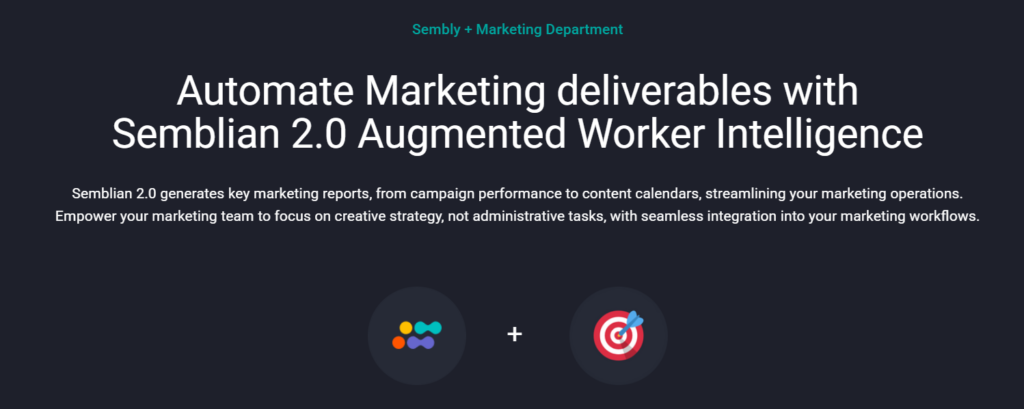
The platform also shines in capturing and organizing meeting discussions, a crucial yet time-consuming aspect of marketing workflows. While marketing automation tips often focus on campaign management, Semblian addresses a fundamental pain point—note-taking during strategy sessions and team meetings. By automatically documenting key points and decisions, it lets marketing teams focus on meaningful discussions rather than typing notes. This feature helps teams stay productive and ensures that no important details get lost while maintaining a natural flow of conversation.
For companies taking their first steps into marketing automation, Semblian provides a clear entry point. Its straightforward design lets teams start with basic tasks like automated meeting notes before moving to advanced features. As teams gain confidence, they can scale automation workflows to match their business needs and market demands.
Don’t know how to implement marketing automation? Try Semblian 2.0 today and experience the immediate difference intelligent automation can make for your business.
FAQs
What is the key to effective marketing automation strategies?
In our how-to on marketing automation, we recommend starting with one key marketing channel and building up over time. Any strategy works best when you begin with basic email campaigns and lead forms before attempting complex workflows. This approach lets you track results and scale successful processes.
How do automation tools impact conversion rates and customer service quality?
When set up correctly, marketing automation boosts conversion rates by delivering timely, personalized messages to prospects. It also strengthens customer service by quickly handling basic inquiries, letting support teams focus on complex issues that need human attention.
What’s a key part of marketing automation content strategy?
Content mapping helps match your messages to each stage of the buyer’s journey. It tells you what to send and when, keeping prospects engaged with relevant compelling content.
What are essential marketing automation tips for beginners?
Begin with a single channel and master basic workflows before scaling. Track performance metrics and adjust your approach based on data, not assumptions.
How can marketing automation strategies for sustaining success improve over time?
Regularly test and optimize your automated workflows. Monitor engagement metrics, update content based on results, and keep your customer data clean.
Introducing Semblian 2.0
- ✦ Multi-Meeting Chats
- ✦ AI Insights
- ✦ AI Artifacts
